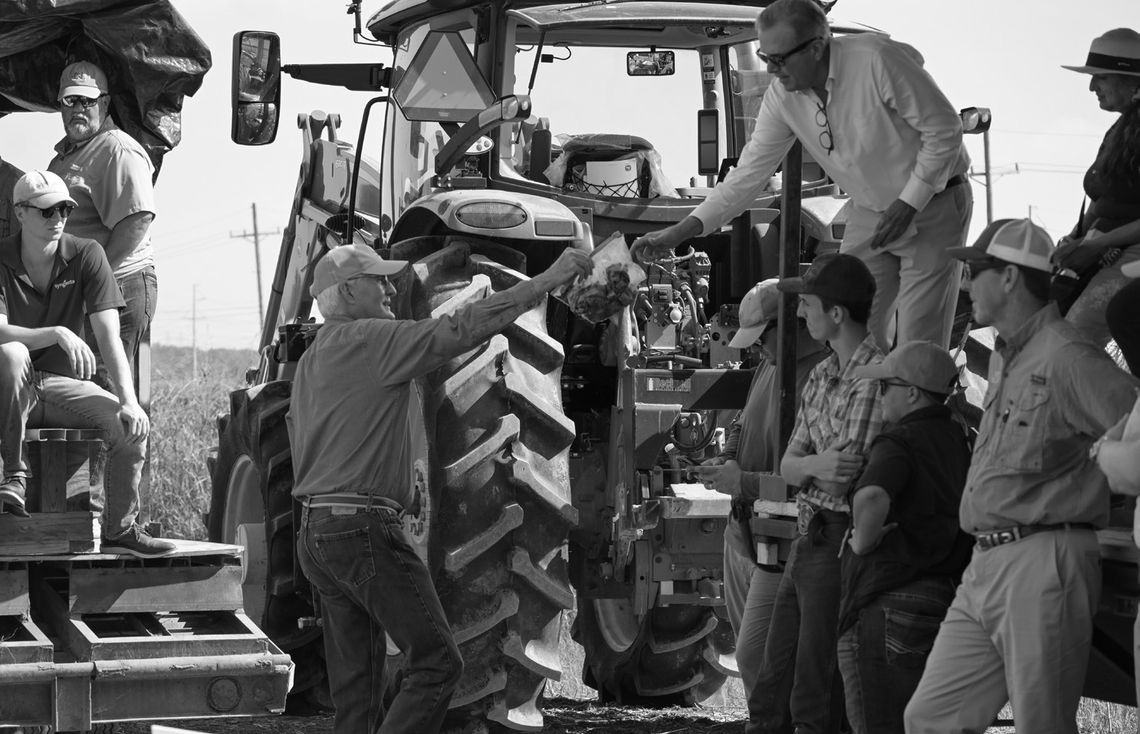St. Gabriel — This year’s annual field day at the LSU AgCenter Sugar Research Station featured a stop that highlighted several conservation practices.
Kenneth Gravois, Ag-Center sugarcane specialist, joined Brenda Tubaña, AgCenter soil scientist, and Bruno Nicchio, AgCenter postdoctoral researcher, to explain how sugarcane farmers can benefit from implementing these practices. The July 16 event drew a recordbreaking audience of more than 300 people.
The scientists’ efforts are part of a project funded by the Patrick F. Taylor Foundation Grant, an AgCenter project designed to showcase model farms operating within commercial agricultural systems, demonstrating science-based best management practices (BMPs) for grain crops and sugarcane.
Gravois began by detailing the research trials at the station, which include commonly used cover crops such as sunn hemp and sorghum- sudangrass.
Nicchio started his talk with a simple question: “What is one of our biggest challenges in sugarcane production nowadays?”
Residue management has become increasingly important as the popularity of post-harvest burning has declined. Nicchio explained that managing crop residue is crucial not only for yield but also to preserve the field’s soil health and water quality.
There are three methods they have explored to retain the residue in the field in a beneficial way.
A fine chopper chops the residue into fine pieces and distributes it evenly, allowing for faster decomposition. A rake sweeper sweeps residue left on top of the rows into the furrows, increasing contact with soil microbes and decreasing the chances of clogged rows.
Lastly, a harvester with a shield attachment directs residue into the furrow, resulting in only 30% remaining on top of the rows. This eliminates the need for additional burning for sugarcane to grow.
“Whenever it rains, the water leaving the field will be cleaner because surface protection by residue on the furrow, more moisture will be kept in the soil and, by the time the canopy closes up, the majority of the residue will be decomposed,” Nicchio said.
Next, Tubaña spoke about other conservation practices being tested.
A lightweight black substance called biochar was distributed in plastic bags for attendees to pass around and observe more closely. Biochar is a type of charcoal containing high amounts of carbon that has the potential to improve soil quality in various ways.
“Biochar helps to retain moisture and nutrients and to reduce the amount of carbon dioxide in the atmosphere,” Tubaña said. “Also, it comes from bagasse, an agricultural byproduct of sugarcane. This is an added value to sugarcane production.”
Tubaña also touched on cover crops, which are described as green material that eventually decomposes and releases nutrients for the next cycle of sugarcane crops.
Samples of the root system of the cover crop sunn hemp were passed around for the attendees to look at.
Lastly, Tubaña presented a new tool called variable rate technology (VRT).
“Every year, we put out pounds and pounds of nitrogen, wondering is this really what the sugarcane needs?” she said. “Well, with VRT sensors, we may have a better idea of the answer.”
The VRT is designed to determine the optimal and most efficient amount of nitrogen to apply by collecting data on the health of the sugarcane plants.
“The flow rate controller applies nitrogen wherever it is needed in the field and at rates needed by cane,” Tubaña said. “The yield is not going to be the same every year, so why would we apply the same rate of nitrogen every year? We have to apply it based on the needs of the sugarcane.”
For more information about the Taylor grant, visit www.LSUAgCenter. com/taylorgrant.


